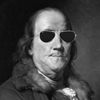With the end of World War II in August 1945, there was still no consensus on Korea's fate among Allied leaders. Many Koreans on the peninsula wanted independence and rejected re-occupation by foreign forces. Per the agreement at Yalta, the USSR entered the fight against Japan and invaded Manchuria and northern Korea. On August 10, 1945 two young officers, including future Secretary of State Dean Rusk, worked to define an American occupation zone. Working on extremely short notice and without consulting any experts on Korea, they used a National Geographic map to decide on the 38th parallel (not knowing that 40 years earlier, Japan and Russia had discussed sharing Korea along the same parallel.) On August 15, 1945, Japan's last Governor-General handed over power, marking Korea's Victory over Japan (Gwangbokjeol, literally "Restoration of Light Day"). The Republic of Korea was established exactly three years later.
Despite Soviet opposition, a UN-supervised election helped establish two separate Korean governments, with the South Korean government declaring independence from the U.S. military and the USSR's Korea building up military strength.
This Moment was compiled from an interview with David E. Mark (interviewd beginning July 1989) was the Political Advisor (POLAD) to U.S. Forces in Seoul from 1946 to 1949. Read the entire Moment on ADST.org
MARK: Seoul had been one of the consulates general under Tokyo before the war, and we had a nice compound in the center of the city with a lovely old-style house that I believe is still used by the American ambassador, plus a little office down near the gate to the compound.... But in 1946 we were the only diplomatic establishment. The head of the office did high politics and told me about them. I began to learn. I was engaged in everything else, which included a little bit of administration, such as it was. We had one very faithful, loyal Korean employee, who had held out even during the war under a lot of pressure by the Japanese. There was a good bit of consular work from people trying to emigrate to the United States -- in those days under the Oriental Exclusion Act. No Koreans could hope to go as immigrants, but there were a lot of White Russians and others in Korea at the time....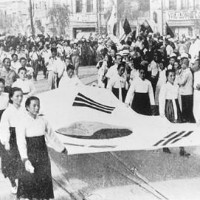
The State Department and my boss, Bill Langdon, were really trying to prevent a right-wing victory among the Korean groups as we moved toward independence, which occurred in August 1948.
The military's first interest, as I said, was the Soviet Union and their forces, and second was our efforts to create a unified government for Korea, North and South. I think it was the December 1945 meeting of the British, French, American, and Soviet foreign ministers that had laid down a plan for a joint commission on Korea. The joint commission, American and Soviet, was to meet either in Seoul or Pusan, or both, to try to work out a unified government for the country under some form of very tenuous, unspecified trusteeship that was to be operated by the two superpowers. The trusteeship was to cover the whole country, because it was to be a unified regime.
In any event, the problem was that, in order to form a united Korean regime, we had to consult with various Korean groups. The Soviets immediately laid down a condition that consultation should only take place with those Korean groups which supported the Allied plan, including the indefinite
trusteeship of Korea.... Well, in any case, the thing broke down because all of the South Korean groups -- virtually all of the South Korean groups, particularly those on the right, and therefore favored by the Americans -- were against trusteeship. They said, "We want to become an independent country, and we don't want to have the United States and the Soviet Union telling us what to do after we become independent." So the thing broke down.
The next meeting of the Soviets and the Americans in the joint commission, in the spring of 1947, these groups began testifying before the joint commission as to what their aspirations were for Korea and how they hoped a government would be set up. But the Soviets immediately began challenging them again saying, "Well, deep down in your hearts you are still against the trusteeship agreement." And, although we tried to work out modifications of the formula, the thing definitively broke down at that point.
There were communist or left-wing groups in South Korea until the Communist Party itself was outlawed sometime in late 1946 or 1947 because they engaged in a lot of trade union activity and incited a large number of strikes, including even a general strike in the country. So we -- the military government -- just outlawed the Communist Party. In the meantime, our forces had set up a full-fledged military government along the lines of the Japanese structure. That made even our right-wing friends in the government, in effect, only political parties. But since our military government had to rely on Koreans to staff the basic functions of the government all over the country, we tended to turn to these right-wing groups, and many of them were people who had flirted with the Japanese in one way or the other, or at least sympathized with them.
We brought back from China...Syngman Rhee, who became the first president of South Korea later on. But he was a man who had an impeccable anti-Japanese record from about 1919, when he had a little revolt against them and then he had had to flee, but his leanings were all on the right side. When he came back to the country, he was welcomed literally with a red carpet at the airport by the American generals.
The State Department was rather disturbed at the U.S. military's partiality toward the rightist side, although I suspect that the American military in its own mind probably didn't consider itself partial to anybody. They just wanted to keep the place orderly initially until they got a united Korean government, and after that until we got some sort of independent government for South Korea. They didn't want any communists there for sure. The State Department, and particularly my boss, was trying to promote a middle-of-the-road group.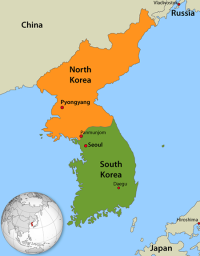
When the second round of the U.S.-USSR joint commission failed in the summer of 1947, it was clear that Washington wanted to get some indigenous authority established in our part of Korea. So we then began moving toward legitimizing elections that could be held in the South to create a South Korean government. Indeed, we even got a U.N. resolution passed.
Of course, all through this period we were debating in Washington about whether we should maintain a long-term interest in Korea.... it was later in 1947 that [Secretary of State] Dean Acheson made a speech in which he clearly indicated that the mainland, including Korea -- all parts of it -- was not going to be in effect defended within our security perimeters. The idea of not including Korea within our security perimeter made it all the more urgent that we at least leave South Korea with some kind of independent government, independent regime.
To jump ahead a little bit, when this new government came into being on August 15, 1948, we had made the decision to pull out of Korea altogether by the end of 1948. We were going to be out of the mainland militarily by December 31, 1948, but events postponed that.
The Department considered Syngman Rhee a stubborn older man living in the glory of his 1919 revolutionary attempt, who showed no flexibility, who was inherently authoritarian, who was pretty ruthless with any opposition groups or people who wouldn't cooperate with him, who behaved like a politician to be sure, which he had to be, but, nevertheless, one not in the democratic mold. His years of living in the West had not imbued him with the ideas that we would liked to have seen implanted in South Korea, although we were probably unrealistic.
Elections did take place; Syngman Rhee was elected...and he was inaugurated as president on August 15, 1948, which was Independence Day.... The democratic center-left groups that the State Department favored faded from the scene.
Syngman Rhee did not have substantial American help in winning the election; I don't think he really needed it. He had gotten the signs of American approval when he was allowed to land in his own DC-4 at the airport and a red carpet was rolled out, with representatives of the American command there.
In October 1948 -- two months after the inauguration of the government -- there was a Communist military rebellion fomented by people who had infiltrated down the central mountain spine of Korea.
When the revolt broke out, the infiltrators really seized control of some areas in the South. We had begun to form a Korean constabulary back in 1946, but the Soviets had begun to form a Korean army -- a North Korean people's army -- which was far larger, better equipped and trained than our constabulary...
The constabulary was deliberately kept under-equipped. When I left Korea, which was April 1949, I remember some Korean officials, who were friends, pleading with me to speak in Washington about getting a supply of artillery shells for them. And I said, "But you have a six- month's supply." And they said, "No, that's only for training purposes. You know, it would be used up in a couple of days if we ever had to fight, and here the North is building up a very sizable army."...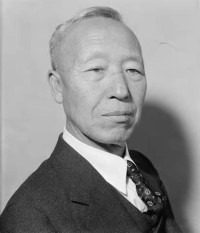
I stayed in the South for a couple of days and then went into one of the first towns that the South Koreans had been able to recapture from the Communist rebels. It was a pretty gruesome sight in this area because the rebels had taken 200-250 people who were prominent in the South Korean government or in the community whom they had marched out of town, along a road. Then they tied their hands behind their backs and just mowed them down. I saw about 200-250 prominent dead people along the road.
When I got back to Seoul about four or five days later, I went to see the Ambassador and said, "You know, the Communist strength, their military strength, is obviously a lot stronger than we had thought, and if we pull out all our forces, which is now scheduled for December 31, we are soon going to lose this place." I was urging that we stay on and change our policy about pulling out.
So the Ambassador said, "Well, draft a telegram and we will send it in." I did that.... By this time our military was essentially not involved any longer in policy formulation; so they were never consulted on our telegram. We had already cut down two regimental combat teams, you know, and the total number of forces was somewhere probably 5,000 to 10,000 at that point.
The response from Washington was that they weren't going to change our policy, but since, obviously, conditions weren't settled and the South Koreans needed sort of more support, at least in a morale sense, Washington would agree to let the regimental combat teams stay until July 1, 1949 -- six months longer. I left in April. During my last days in Korea, I wrote a paper...ending with my views that I thought we were endangering our position in Japan by pulling out of Korea and that that our Korean policy should be reviewed in this broader context. The embassy sent the thing in from the Ambassador saying, "Here is an interesting paper from our departing acting political counselor. The embassy takes no position one way or the other."
In early 1949, we in the embassy had no sense that an invasion from the North was a real danger. Korea must have been a great temptation, particularly after we had announced our intention to pull out and had excluded it from our security perimeter, without even voicing any words of conditionality or contingency in that regard. They had built up a force in the North -- an indigenous force that was much better than the one in the South and had active Soviet Red Army backing. The North is about half the population size of the South, but that wasn't very important, because it had mobilized a large part of the population and had equipped it well.
We had not done that in the South. The South was not a totalitarian state. The government was authoritarian to be sure, but there were still dissident elements in the South.... The Syngman Rhee government was totally hostile to the North. But objectively speaking, the South forces were not ready and the United States was still present.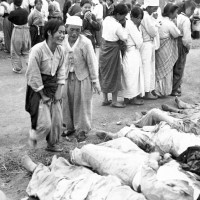
I don't remember what the Soviets may have said about their security backing for the North Korean regime. We were well aware of Soviet supplying military advisors, if not de facto commanders, down even to the company level in the North Korean forces. There was not a Chinese role at the time, because the Chinese had just concluded their own civil war in 1949, but the Soviets and Chinese were cooperating at the time.
When the invasion actually happened in June 1950, the American response was totally unanticipated. It shows that Harry Truman had a gut reaction that made a lot more sense than the sophisticated deliberations of the cabinet departments in the previous years. He instinctively knew that a challenge from a Soviet-backed state could undermine our entire position in the Far East and, more specifically, our position in Japan. It was becoming clear even then that Japan was going to regain its status as a very major voice in the Pacific.
